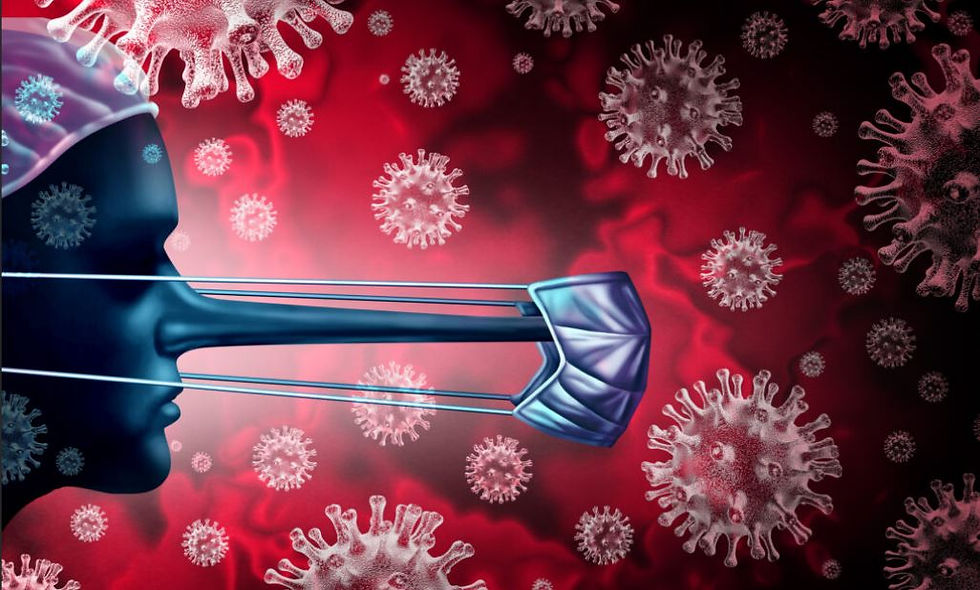Causes and Alternatives to the Addiction Crisis
- Arnaldo Cruz Igartua

- May 23, 2021
- 4 min read
Updated: Aug 11, 2021
Why are public health epidemiological studies and their scientific responses not heard/implemented by the government?
Some examples of poor application of epidemiological scientific findings:
1. Is substance abuse simply a behavioral problem, or is it a long-term mental illness that profoundly affects people's well-being and bio-psycho-social-spiritual health?
(read the blog: Is treatment synonymous with therapy?)
In mental illness, we are presenting bio-psycho-social and spiritual dimensions. Active severe addiction is named "substance-related disorder" and in this case, no medication alone is considered a complete "treatment", but a "therapy" that facilitates treatment (read the blog. Is treatment synonymous with therapy?). Most of the available "programs" have limited or no psychosocial evaluations or interventions (in fact, some federally funded programs prohibit the word therapist and only use terms such as "case managers". By confusing active addictions, oversimplifying them, with behavioral problems, it amplifies the hostile and punishment attitude (sometimes mocking and open discrimination) towards these patients rather than an attitude of understanding and help that can contribute to rehabilitation. Lack of non-punitive rules and if they protect the effectiveness of treatment appears to be the norm in public and private treatment facilities. The lack of integrating professional follow-up and addiction psychiatry/medicine services to those most commonly offered: psychology and social-counseling work are also essential and reduce the cost-effectiveness of these treatments.
It is true that science considers drugs to treat opioid use disorders (MOUD including Methadone. Buprenorphine and Naltrexone) are an essential part of treatment for OUD patients due to the lethality of overdoses worsened by heroin mixed with fentanyl. They are also important for reducing substance craving and also valuable for many patients in long-term maintenance to prevent dangerous relapses. But in mental health (including addictions) no medication is a complete treatment; It is considered only a therapy that facilitates comprehensive treatment. For that reason is named "medication-assisted treatment". The use of MOUD as a treatment is often of great benefit during the first 3-6 months, but it has been found that the lack of a comprehensive specialized interdisciplinary treatment program makes it much less effective in the long term for most patients.
2. The most widely used services in the U.S. (hospitals, emergency rooms, and regular "office-based" outpatients) are the least cost-effective in the long run for patients. The most cost-effective are not well covered by health insurance (like the case of intensive therapeutic and outpatient communities). This results in a revolving door effect where the same patients enter and leave without rehabilitating and wasting taxpayers' money. Who benefits from this situation?
3. Lack of access to treatment for 90% of people with active and needy addictions is in addition to the misuse of epidemiological public health findings. There is a need to guide a policy change of decriminalizing/treatment (not to punish with jail but to control, evaluate and treat when necessary (read the alternatives to prison blog).
4. In addition, the services are fragmented at their base (there is no collaboration or communication between their prevention/treatment/damage reduction components) nor do they have interdisciplinary teams with the three necessary disciplines.
5. There are some publicly funded "programs" that prohibit medication and do not accept mental health professionals or therapies and others that receive public funds to apply exclusively pseudo-scientific methods to what they call their "customers" (such as the use of vitamins and sauna and not even detox medicines).
6. Substance use disorders are mental illnesses and are usually accompanied by other morbid mental illnesses. Some programs only treat addiction or mental illness, but not patients with both (which are the rule without exception). Government programs prescribe addictive drugs (benzodiazepines and opioids) to most patients inappropriately, in large numbers, and without adequate supervision. There is a great need to educate medical doctors and other mental health professionals in the nature and early detection and interdisciplinary treatment of persons with addictions.
7. Advertising/standardization of any addictive substance (for alcohol, tobacco, and now marijuana consumption) should be prohibited and the addiction industry should be asked for an additional tax to fund scientific education, prevention, and treatment targeting at-risk populations. "Medical cannabis" is a pseudoscientific term inserted in the law of some states by the support of marihuana industry with the effect of normalizing it in the most vulnerable clients, people like young adults and adolescents. Most of the money from legal demand to the tobacco industry for cancer and other damages was not earmarked for addiction prevention/treatment but was used by the government for other expenses. Most people with addictions started using alcohol, tobacco, and marijuana during adolescence. At this age, the risk of developing addictions is 5 to 20 times higher than after age 21 due to brain immaturity.
Rehabilitation needs access to social/vocational services and an intensive initial phase of treatment to learn problem-solving skills that have deteriorated due to cumulative substance toxicity in the brain. You also need long-term maintenance services and support groups that aren't fully used, therapy that facilitates comprehensive treatment.
References: 1. Principles of Drug Addiction Treatments: A Guide based on NIDA Research
2. Economic Benefits of Drug Treatment: A critical review of the evidence for policymakers Feb 2005, Steven Belenco, et al University of Pennsylvania
3. Lessons learned from the opioid epidemic Joshua M Sharfstain et al JAMA, online 2019






Comments